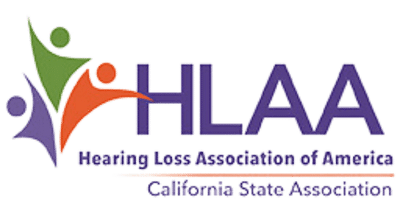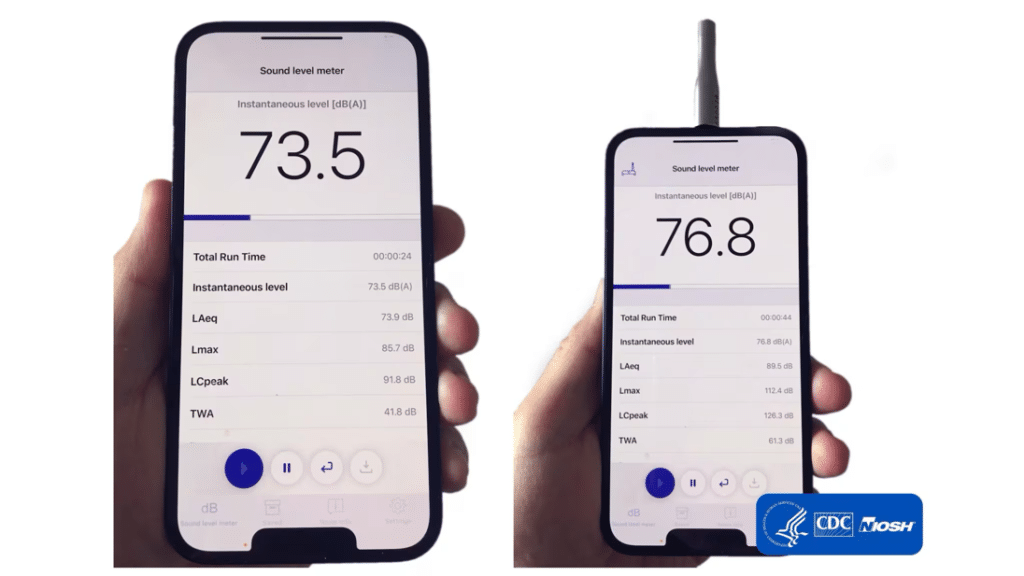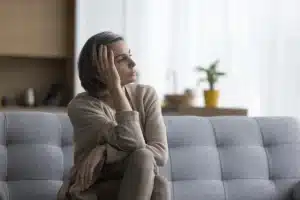We may be biased considering Sacramento is our hometown and that we have been fierce Kings fans our whole lives, but the Sacramento Kings have one of the most passionate and loyal fan bases in the NBA. Despite years of revolving front offices and a long (yet recently broken!) playoff drought, Sacramento Kings fans routinely show up and show out for their team. However, with this intense loyalty comes intense noise levels.
When measuring sound, you can be exposed to sounds as loud as 90 decibels (dB) for eight hours without running the risk of hearing damage2. For every five dB increase in noise, how long you can be exposed to the sound is cut in half once a sound reaches 90 dB. For example, the allowable exposure time for a 90-dB sound is eight hours, but it drops to four hours for a sound that is 95 dB. Rock concerts average around 110 dB, meaning that it’s only safe to listen to the music for a half hour before your hearing might be affected. Much like concerts, Sacramento Kings games can reach well the safe exposure limits. At a 2013 Sacramento Kings game, 126 dB was recorded during a crowd roar between the third and fourth quarters of the game3. Mallory even recorded 116 dB on her cell phone during the first playoff game against the Golden State Warriors in 2023 (a sound of 115 dB has an allowable exposure time of 15 minutes). With 41 home games in a regular NBA season, regular attendance at these games may put fans at risk of continuous harm to their hearing or even temporary and permanent hearing loss1.
In March this year, our California State University, Sacramento Student Academy of Audiology (SAA) chapter was grateful to get the chance to table at a Sacramento Kings game against the Dallas Mavericks. This game was pivotal in the Kings’ run for the 2024 playoffs, so attendance and noise levels were guaranteed to be high. SAA is comprised of undergraduate and graduate students passionate about audiology. We organize a monthly speaker series with topics on different facets of audiology, perform community hearing screenings, and interact with the Sacramento community to teach the importance of hearing conversation.
After stapling numerous information sheets on noise-induced hearing loss to packets of ear plugs, we headed to Golden 1 Center to set up our booth by section 112. From the time the doors to the arena opened until the end of the 4th quarter, we handed out ear plugs, demonstrated proper earplug insertion, explained how hearing loss occurs using a model of an ear, and demonstrated the use of decibel meter mobile applications, like NIOSH, Decibel X, and Apple Health, to help track the noise intensity of one’s surroundings.
The interactions with attendees were overwhelmingly positive. Most visitors engaged with us, asking questions about hearing loss and our educational program, while only a few simply took the earplugs and left. We left the game feeling like this opportunity afforded to SAA CSUS by the Sacramento Kings organization helped us significantly raise awareness about noise-induced hearing loss and promote safe practices for wearing hearing protection in noisy environments.
Awareness of noise-induced hearing loss at Kings games is the first step; however, events like NBA games are only one of many places where it is important to protect your hearing. Exposure to loud sounds damages the little hair cells in the inner ear that are important for differentiating between pitches. When these hair cells get damaged and do not function as well anymore, it makes it harder to hear and understand different parts of speech. Loud noises may lead to hearing loss in higher pitches, impacting the clarity of speech and making it seem like people are mumbling. Using earplugs or other hearing protection cuts down on the decibel/noise level you are exposed to, increasing how long you can safely enjoy loud environments.
We appreciated the people who took a few minutes to learn about hearing loss and protection from us during the game. However, there is still work to be done in hearing conservation. While we may have distributed over 100 ear plugs, we noticed that not everybody wore them. Sacramento Kings games are always an invigorating atmosphere, and we hope that the information we shared that night influenced some to pop in those earplugs during loud games so they can continue to enjoy chants of “LIGHT THE BEAM” for seasons to come.
October is both the beginning of the NBA season and National Protect Your Hearing Month. So, remember, Kings fans- protect your ears and they’ll thank you in a few years!
Written by Mallory Sellens, B.S., and Jamie Followill, B.S.
References
1 Lonsbury‐Martin, B. L., Martin, G. K., & Bohne, B. A. (1987). Repeated TTS exposures in monkeys: Alterations in hearing, cochlear structure, and single‐unit thresholds. The Journal of the Acoustical Society of America, 81(5), 1507-1518.
2 Occupational Safety and Health Administration. (1970). Occupational safety and health standards: Occupational health and environmental control: Occupational noise exposure (Standard No. 1910.95). United States Department of Labor. https://www.osha.gov/laws-regs/regulations/standardnumber/1910/1910.95
3 Petersen, M. (2023, January 13). Some big, memorable single-game crowds in NBA history. NBA. https://www.nba.com/news/some-big-memorable-single-game-crowds-in-nba-history




